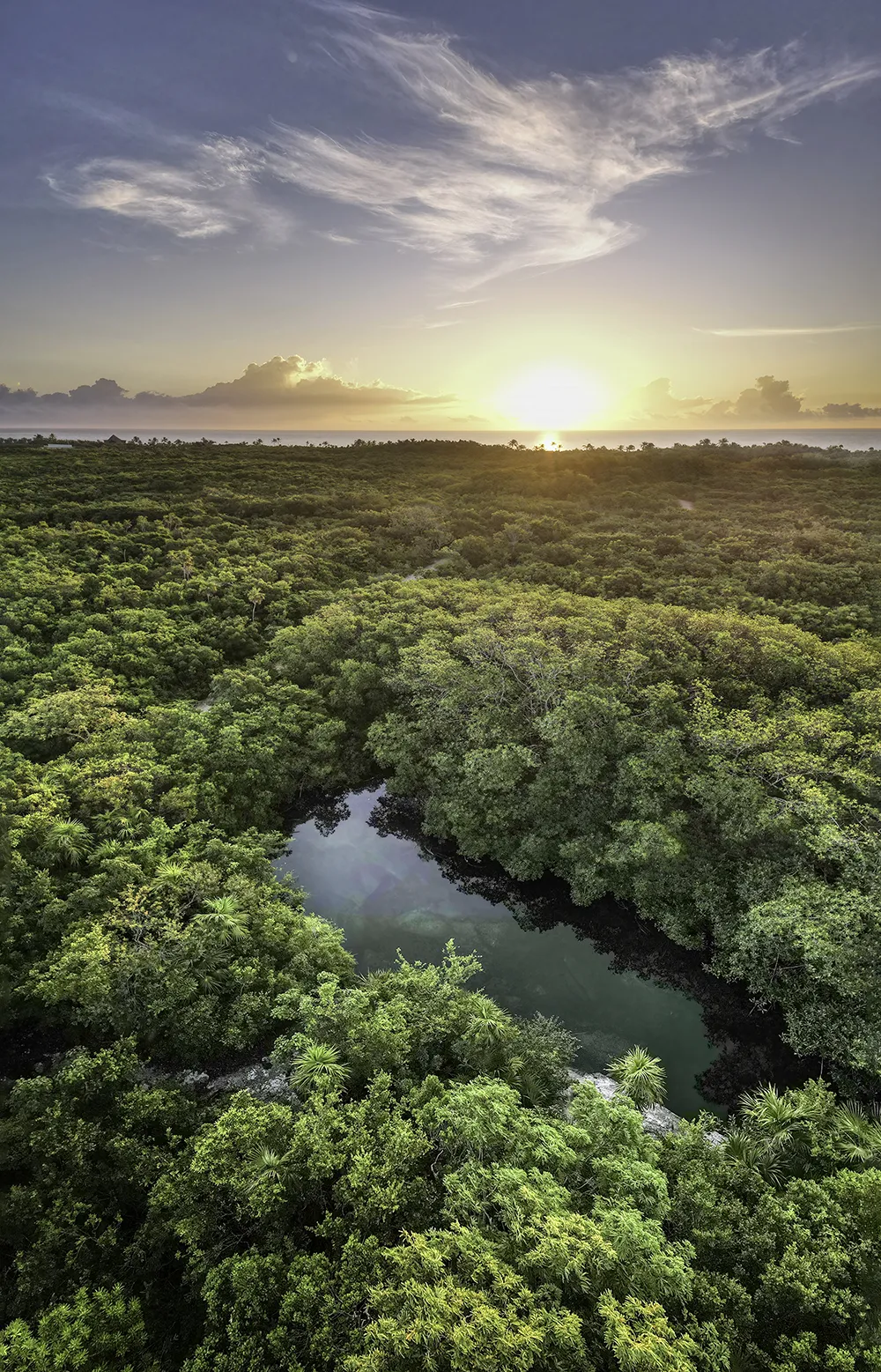The underwater caves of the Yucatán Peninsula are a window to the distant past. Through two million years and over multiple glaciation cycles, these caves have been transformed. When the sea level was high, the caves flooded, and their reach expanded.
During the ice ages, the caves dried out as the sea level dropped, and the seeping water from the surface decorated the caverns with deposits such as stalagmites and stalactites, collectively known as speleothems. Then, with the next cycle came higher sea levels again, flooding the caves and preserving in time the speleothems and everything else with them.
I have been diving the unique submerged landscapes of Mexican cenotes, or sinkholes, for almost ten years, exploring their dark, flooded tunnels and capturing their secrets. The last time the shallow caves on the Yucatán Peninsula flooded was around 8,000 years ago, which means that every diver in these caves travels back in time to a prehistoric age. The paleontological and archaeological remains preserved within them would disintegrate at the surface, which makes these caves a perfect time capsule.
How Mexico’s cenotes came to be
The lagoon-like entrance of an unnamed cenote stretches out near the Caribbean Sea.
Martin Broen
This underworld is formed by a massive underground aquifer in the northern Yucatán Peninsula of Mexico. It is accessible by cenotes that connect the surface of the Earth to the longest underground river systems in the world. Here, water doesn’t accumulate on the surface as rivers, but instead gets absorbed through the porous limestone to flow within underground tunnels. Much as our blood vessels send life-sustaining fluid throughout our bodies, these tunnels convey the precious water that sustains all life in this region. It is no wonder that cenotes were considered sacred by the Maya.
The Maya established their civilization on the Yucatán Peninsula about 4,000 years ago. In order to thrive, they needed to settle close to a freshwater source. All of their largest settlements on the northern part of the peninsula—including the famed Chichén Itzá—were built beside cenotes. During the region’s dry…
Click Here to Read the Full Original Article at Travel | smithsonianmag.com…
